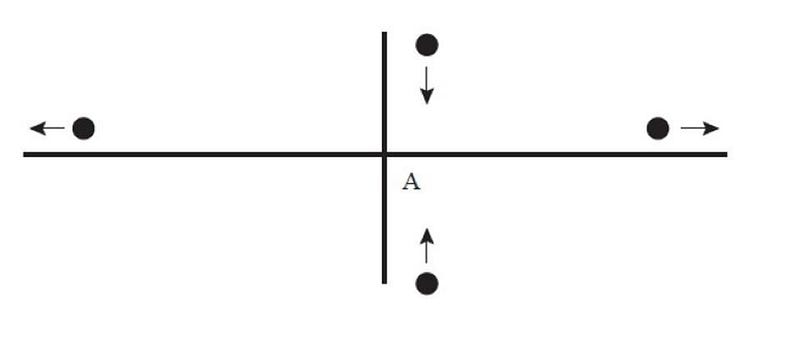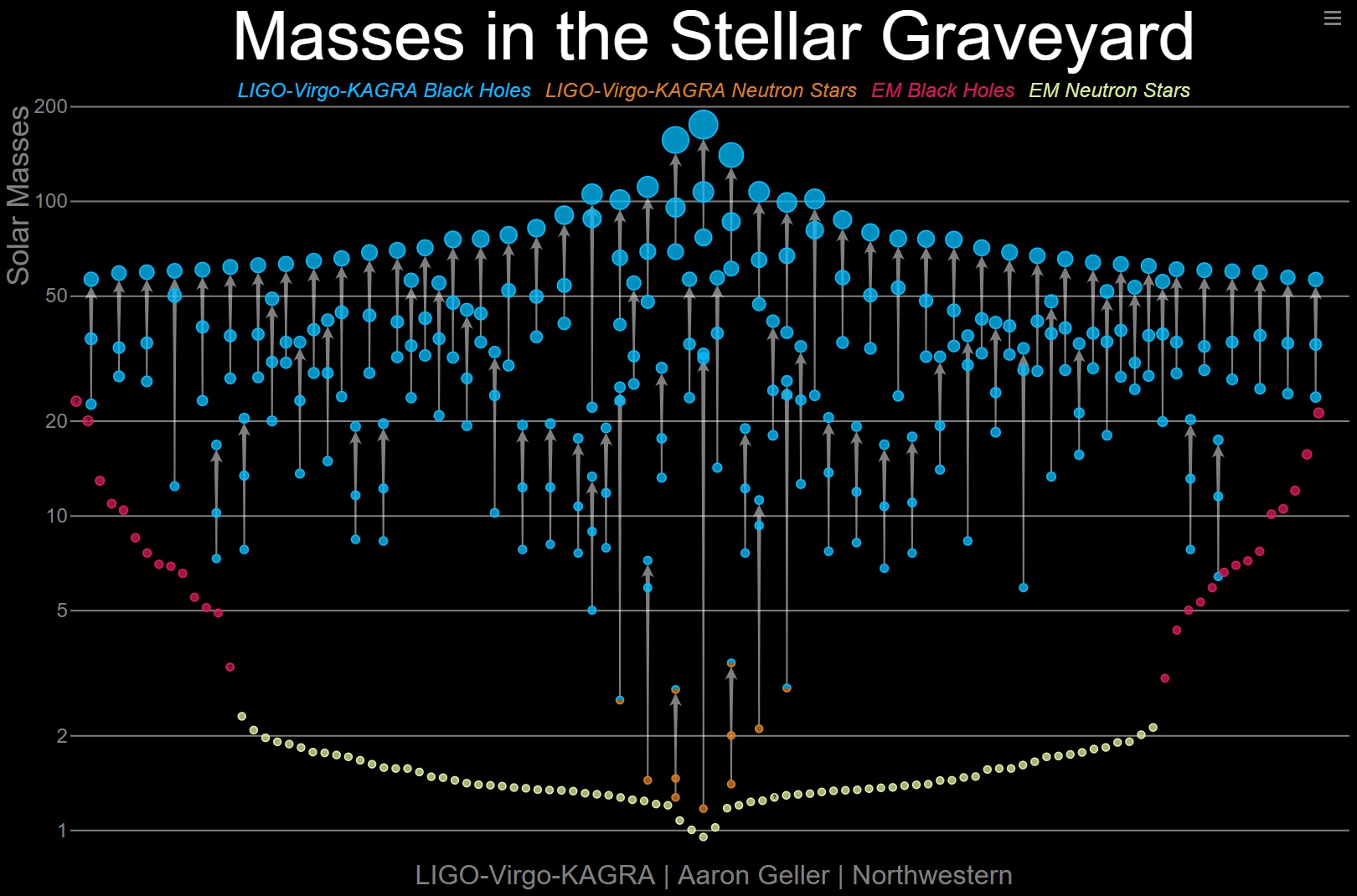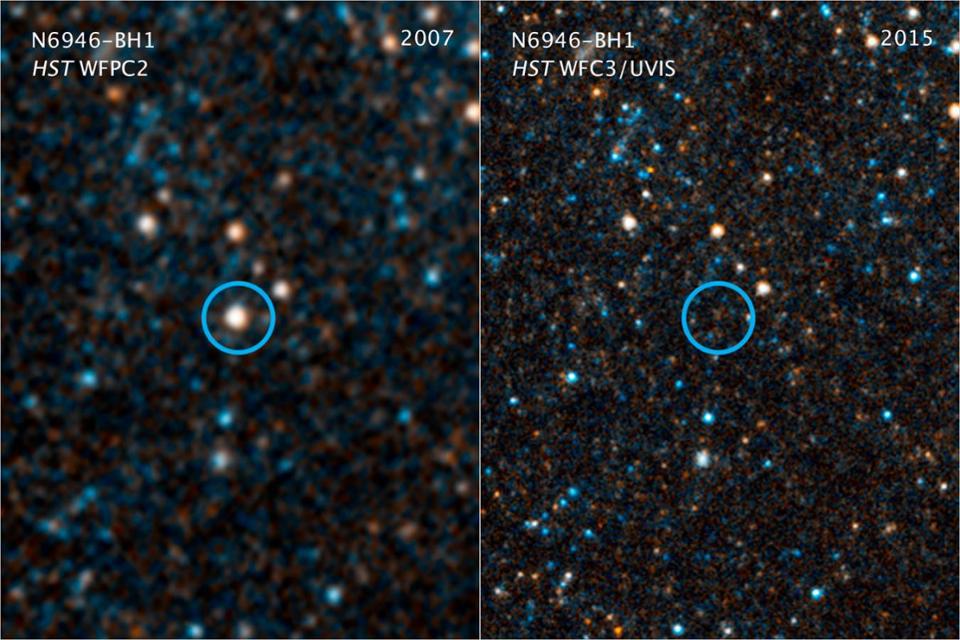Sign up for the Starts With a Bang newsletter
Travel the universe with Dr. Ethan Siegel as he answers the biggest questions of all.
If you want to detect a gravitational wave, you have to design something extraordinary. Gravitational waves are ripples in spacetime — distortions in the very fabric of spacetime itself — that propagate at the speed of light and that alternately stretch/expand space in one dimension, perpendicular to the direction of the wave’s propagation, while compressing/shrinking space at a 90 angle to the expanded dimension. Even the strongest of these oscillating, compressing-and-rarifying motions cause very tiny changes in distance: of the scale of a few atoms for an object the size of planet Earth. And yet, with the right technology, like a high-precision laser interferometer, we can detect these changes directly, pinpointing the origin and properties of the astrophysical event that generated these gravitational waves.
It was back in 2015 that the twin LIGO detectors, one in Livingston, LA and one in Hanford, WA, first turned on, and within days, they had spotted our first gravitational wave event: GW150914, which indicated the merger of two black holes, one of 36 solar masses and the other of 29 solar masses, creating a 62 solar mass black hole and generating three solar masses worth of gravitational wave energy. Fast forward to the present day, and we’ve spotted over 300 gravitational wave events, with a total of four detectors operating: the twin LIGO detectors, plus Virgo in Europe and KAGRA in Japan.
They’ve just announced the most massive gravitational wave event ever seen: GW231123, which raises a tremendous new puzzle for astronomers. Yet at the time when we need new, improved observatories the most, the traditionally reliable funding source of the US government is instead proposing to shutter these existing flagship observatories. Here’s what’s going on in this revolutionary, but threatened, new field of science.

The “sticky-bead” argument, put forth by Richard Feynman, was that gravitational waves would move masses along a rod, just as electromagnetic waves moved charges along an antenna. This motion would cause heating due to friction, demonstrating that gravitational waves carry energy. The principle of the sticky-bead argument would later form the basis of the design of LIGO.
It was less than 10 years ago that gravitational waves were still regarded as speculative: a longstanding prediction of Einstein’s general relativity, but one that had garnered a great deal of controversy throughout its history. Although the theory predicted that they ought to exist — generated whenever a mass moved through a region whose spatial curvature was changing — the jury was still out as to whether these waves were physically real and carried energy, or whether they were mere mathematical artifacts that were incapable of performing work in a physics sense.
However, a very clever argument known as the sticky-bead argument demonstrated that they ought to, indeed, carry energy that could be transferred into, among other things, a carefully-constructed detector. The key is to imagine that you have:
- two thin rods that were mutually perpendicular to each other,
- with two beads on either end of the rod,
- where one bead is fixed and cannot slide, but the other is free to move relative to the rod,
- where a gravitational wave passes perpendicular to the two-rod setup,
- and where you have friction between the bead and the rod.
As space stretches-and-compresses, the beads slide along the rod. And because there’s friction between the rod and the bead, energy gets transferred. Even though this was just a “thought experiment,” it paved the way for the future real-life design of our actual gravitational wave detectors, based on laser interferometry.

When the two arms of an optical interferometer are of exactly equal length and there is no gravitational wave passing through, the signal is null and the interference pattern is constant. As the arm lengths change, the signal is real and oscillatory, and the interference pattern changes with time in a predictable fashion. This technique is what is used to directly reveal the presence of gravitational waves.
Our actual gravitational wave detectors leverage this very principle. What they do is, in two mutually perpendicular directions, shoot highly calibrated lasers down an exquisite vacuum, where they reflect off of mirrors more than 1000 times before being brought back together and forced to interfere with one another. In the “standard” configuration, which is in the absence of any gravitational wave event, the dual reflected lasers get brought back together to interfere in a 100% destructive way: leaving no interference pattern at all. The only thing you get is random “jitter,” which is purely due to noise effects, like thermal noise in the detector or seismic noise from the Earth’s tectonic plates.
However, when a gravitational wave passes through one of these detectors, the two laser beams, in two mutually perpendicular directions, alternately see their path lengths change: one compressing and shrinking while the other rarefies and expands, and then switching back-and-forth. Although we originally gathered indirect evidence that gravitational waves must exist from the decaying orbits of systems like binary pulsars, shown below, it wasn’t until the first direct detection events began, in September of 2015, that we had direct confirmation of the existence of gravitational waves. Once we knew they existed, the race was on to begin surveying the Universe with this all-new form of astronomy.

Advanced LIGO’s range for black hole-black hole mergers (purple) is far, far greater than its range for neutron star-neutron star mergers (yellow), owing to the mass dependence of the signal amplitude. A difference by a factor of ~10 in range corresponds to a difference of a factor of ~1000 for volume, so that even though the number density of low-mass black holes far outstrips the higher-mass ones, LIGO and Virgo are more sensitive out to greater distances for higher-mass systems.
In the time since our first gravitational wave detection, an enormous number of tremendously important events have occurred in that field. No longer were we restricted to looking for electromagnetic signals from astronomical events — from the highest energy gamma-rays down to the lowest-energy radio waves, plus everything in between — or hoping for the ultra-rare cosmic particle emitted from such cataclysms. Instead, we now had a third tool in our arsenal: to measure these ripples directly, from as many different independent detectors as possible, to try to find out as much information as possible about the energetic event that created it.
Over the subsequent nearly 10 years since the first direct detection of gravitational waves, the initial twin LIGO detectors were joined by Europe’s Virgo detector and Japan’s KAGRA detector, allowing us to better pinpoint the location of origin of these events. We’ve also upgraded the sensitivity of our detectors several times, upping our total number of event detections, as of July 2025, to more than 300 cumulatively. So far, we’ve seen three different classes of event in gravitational waves:
- black hole-black hole mergers, which generate no known electromagnetic signal,
- black hole-neutron star mergers, which also generate no known electromagnetic signal,
- and neutron star-neutron star mergers, which can generate a kilonova event (rich in electromagnetic waves and afterglows) if they don’t produce a black hole directly, but which will be electromagnetically silent if they do go direct-to-black-hole after merging.
And now, with the announcement of GW231123, we’ve just broken a number of important records.

The most up-to-date plot, as of November 2021 (past the end of LIGO’s third data run but before the start of the fourth), of all the black holes and neutron stars observed both electromagnetically and through gravitational waves. While these include objects ranging from a little over 1 solar mass, for the lightest neutron stars, up to objects a little over 100 solar masses, for post-merger black holes, gravitational wave astronomy is presently only sensitive to a very narrow set of objects. The closest black holes had all been found as X-ray binaries, until the November 2022 discovery of Gaia BH1. The mass “border” between neutron stars and black holes is still being determined.
Above, you can see a chart of all the different gravitational wave events that had been observed and that resulted in robust detections through the first three observing runs of LIGO and LIGO/Virgo, together. With 90 such events, we had learned some remarkable lessons.
- Gravitational wave mergers are common: much more common than was initially anticipated.
- While there were plenty of neutron star events and many low-mass black holes, as expected, there was also a much larger number of higher-mass black holes seen: black holes of between 60 and 130 solar masses, which were theorized not to exist in any sort of great abundance.
- All told, gravitational wave events lead us to estimate there are now 40 quintillion (4 × 1019) black holes within our observable Universe, representing 0.04% of all the mass/energy in the Universe.
- And even though these detectors are most sensitive to high-mass, low-frequency merger events, we were still seeing many more of them than anticipated, raising a puzzle for astronomers for how these black holes got to be there.
Now, however, with further upgrades, we’re in LIGO’s fourth observing run, where it’s joined by both Virgo and KAGRA. Thus far, this new run has yielded 213 new candidate events of high significance, along with more than 4000 lower-significance detection candidates. One of them, GW231123, has just been revealed to have the highest masses of any black hole-black hole merger ever seen in gravitational waves.

This plot shows the signal of gravitational wave GW231123, which occurred on November 23, 2023, and was seen in both the LIGO Hanford and LIGO Livingston detectors. The bright colors seen in the spectrograms, at bottom, correspond to the strongest signal amplitudes.
Above, you can see the raw data from LIGO Hanford (at left) and from LIGO Livingston (at right), where the peaks of the waveform (in blue) — centered around their maximum observed amplitude (at 0.00 seconds) — are able to be picked out even from a simple visual inspection. The bottom panels are maps in time-frequency space, also known as spectrograms, which show the signal amplitude over time and across frequencies. It’s by analyzing the data in these multiple different ways that we can reconstruct the properties of both the progenitor black holes that inspiraled, merged, and rang down to create the merger, as well as the subsequent black hole that formed as a result of the merger occurring.
After previous gravitational wave events had revealed a large number of these “unexpected” black holes, of between 60 and 130 solar masses, we’ve now recorded our first-ever event where the heavier mass in the merger was above that range: where a ~137 solar mass black hole merged with a ~103 solar mass black hole, creating a final black hole of ~225 solar masses, and where therefore a whopping ~15 solar masses of matter was transformed into gravitational waves. This signal, GW231123, is the most energetic event detected over such a short timespan (just ~100 milliseconds), and for that brief period of time, outshined, in terms of energy, every star in the observable Universe combined: and by a factor of about 1000.

This infographic provides vital stats on the gravitational wave event GW231123, which represents the most massive merger of black holes ever directly detected in gravitational waves, breaking the old record that was previously held by GW190521. The black holes also have near-maximal spins, enabling a greater-than-average amount of mass to be converted into energy in this merger.
This poses a big puzzle for theories of how black holes form. In theory, they should form from stars. Whenever you make stars, you make them across all different masses.
- You make small numbers of very massive stars: stars that burn bright and hot, live and die quickly, and that typically end their lives in a supernova, leaving a neutron star or black hole behind.
- You make much larger numbers of less massive stars: stars that burn much more faintly and live for much longer, and that can only leave white dwarfs behind.
- Many stars are born in binary, trinary, or even richer multi-star systems, meaning that even for the most massive stars that leave remnants like neutron stars and black holes behind, there exists the potential for inspirals and mergers of these remnants.
- However, for stars that do go supernova, there’s an expected limit to the masses of the black holes they leave behind: below ~60 solar masses, or above ~130 solar masses, as the pair instability process is expected to forbid black holes from forming within this range.
We’ve already found many black holes within this theoretically disfavored mass range, suggesting that something about our assumptions isn’t correct. Of course, we aren’t sure what that is, and whether it’s our models of very massive stars that are flawed, our understanding of when stars directly collapse to black holes (and when they don’t) is insufficient, or whether our models of how black holes form and grow within the Universe needs a total overhaul.

The visible/near-IR photos from Hubble show a massive star, at least 25 times the mass of the Sun, that has winked out of existence, with no supernova or other explanation. Direct collapse is the only reasonable candidate explanation, and is one known way, in addition to supernovae or neutron star mergers, to form a black hole for the first time. The direct collapse of this particular object, while still under investigation, may have been triggered by a stellar companion.
What is certain, however, is that if we want to learn more about what the nature of the population of black holes that actually exists within our Universe is, we need to keep studying them. Remember: we didn’t just want to detect gravitational waves to demonstrate that they’re real and they carry energy; they are real and they do carry energy, and finding that out was a tremendous leap forward, but that wasn’t the point.
The point was that this is an incredible, new, and independent tool for probing the Universe in a fundamentally novel way. No longer are we restricted to looking for events that emit detectable radiation signatures: gamma-rays, X-rays, ultraviolet light, visible light, infrared light, microwave light, or radio waves. Instead, we can now use gravitational waves directly to probe the Universe, enabling us to identify objects that may not even have electromagnetic counterparts, like black hole-black hole mergers.
We’ve long had dreams of enhancing our best facilities, and building new ones to explore the Universe as we never have before. LIGO, for example, has the world’s largest gravitational wave detectors at present: with 4 kilometer arms apiece. An upgraded version, known as LIGO II was designated a highest-priority endeavor by the Astro2020 decadal report by the National Academies, would have arms between 10 and 40 kilometers long, and would be many times more sensitive than our current generation of gravitational wave detectors.

This photograph, taken at LIGO Livingston in Louisiana, shows a perspective of looking “down” one of the two perpendicular 4 kilometer arms through which laser light is reflected many times and brought together to construct an interference pattern that’s sensitive to the presence of gravitational waves. With a detector that has arms ten times as long, we’d be sensitive to such events at much greater distances, as well as to orbiting objects with periods that take up to 10 times longer, allowing us to fill in the gap between what LIGO and LISA are sensitive to. The NSF’s “LIGO II” would allow us to close that gap: either partially or wholly.
In addition, there’s a space-based mission that has also long been planned and proposed — LISA, for the Laser Interferometer Space Antenna — that could not only detect gravitational wave events coming from more massive, longer-orbiting black holes than our ground-based detectors can see, but that could give a long-advanced warning for when a black hole-black hole merger that would be detectable from the ground would occur. This early warning system would allow us to predict when such a merger would occur, and would empower us to get our telescopes ready to search for any unexpected signal right at the moment it occurs: we could be looking in the right place at the right time to make the magic happen.
And yet, instead of preserving what we have while growing what’s possible for the next generation, the currently passed (and soon to be enacted, on October 1st) budget for the next fiscal year not only doesn’t fund LISA or LIGO II, but cancels funding for one of the two LIGO detectors, halving the power of Earth’s most powerful gravitational wave observatories at present. It’s as though humanity were in the process of building a skyscraper of knowledge and achievement, and the construction company in charge of the project decided to take a jackhammer to half of the foundation of what’s currently under construction. Like a child running through a carefully-built sand castle, the US federal science budget is an extinction-level event for so many of humanity’s greatest collective achievements.

The image above shows an illustration of the three future LISA, or Laser Interferometer Space Antennae, spacecraft, in a trailing orbit behind the Earth. LISA will be our first space-based gravitational wave detector, sensitive to objects thousands of times as massive than the ones LIGO can detect.
It brings up an extremely important point about science itself that most non-scientists themselves aren’t often aware of. We don’t “do science” because we want to get the answer to a specific question. That’s often formulated as the direct reason why scientific research is conducted:
- we pose a question,
- we want the answer,
- and so we design experiments or observatories to find the answer to those questions.
But that is only a tiny part of the story. In reality, we design experiments or observatories to not only answer the questions we’re thinking about today, but to do two other things as well:
- to open up as much discovery potential space as possible, where we maximize the amount we can detect in the hopes that the Universe will surprise us,
- and to be able to observe, measure, or experiment as far over the currently-known frontier as possible, in the hopes that whatever new questions we didn’t know to ask before (but do now, thanks to our new experiment/observatory) will be able to be probed and potentially answered by our endeavors.
There’s an old saying in life that, “whether you think you can or you think you can’t, you’re right,” usually used to motivate people to believe in themselves and their visions, and to work to bring it to fruition. Science is the same way, only it doesn’t typically rely on the work of just one individual working in isolation. These flagship science projects often require millions or even billions of dollars and hundreds or thousands of scientists, all working together toward a universally common goal. Whether we take the next great leap forward, or abandon our commitment to finding out just what this Universe is and how it got to be that way, is entirely up to what path we collectively choose to take our next steps down.
Sign up for the Starts With a Bang newsletter
Travel the universe with Dr. Ethan Siegel as he answers the biggest questions of all.
Source link

